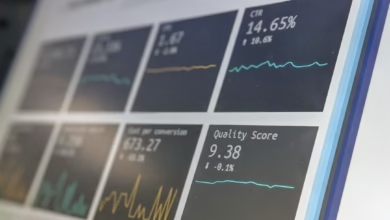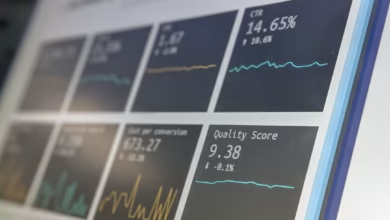Mastering Futures Trading: Essential Strategies and Risk Management for Successful Derivatives Trading

Futures trading has emerged as a compelling avenue for investors looking to capitalize on market movements while managing risk effectively. Unlike traditional stock trading or forex trading, futures contracts allow traders to agree on the delivery of an asset at a predetermined future date, creating unique opportunities and challenges in the derivatives market. This article aims to provide a comprehensive guide to futures trading, exploring its fundamentals, essential strategies, and effective risk management techniques. Whether you're interested in commodities trading, index trading, or even crypto trading, understanding the intricacies of futures contracts can enhance your market analysis and trading strategies. From leveraging technical and fundamental analysis to navigating the volatility that accompanies high-frequency trading, we will delve into the various aspects of futures trading and how it fits into the broader landscape of online trading platforms. Join us as we unravel the complexities of this dynamic trading environment, ensuring you are well-equipped to make informed decisions in your trading journey.
- 1. Understanding Futures Trading: A Comprehensive Guide to Derivatives and Market Dynamics
- 2. Essential Trading Strategies for Futures: Leveraging Technical and Fundamental Analysis
- 3. Risk Management in Futures Trading: Navigating Volatility and Enhancing Profitability
1. Understanding Futures Trading: A Comprehensive Guide to Derivatives and Market Dynamics
Futures trading is a vital component of the financial markets, providing traders with opportunities to speculate on the future price movements of various assets. Understanding this complex field requires a comprehensive guide to derivatives and market dynamics. At its core, futures trading involves contracts that obligate the buyer to purchase, and the seller to sell, an asset at a predetermined future date and price.
The essence of futures trading lies in its ability to hedge against price fluctuations or to speculate for profit. This is particularly relevant in commodities trading, where market volatility can significantly impact prices. By using futures contracts, traders can lock in prices, thereby mitigating risks associated with unpredictable market movements.
In the realm of stock trading and forex trading, futures contracts serve as powerful tools for traders looking to diversify their portfolios. They allow for leverage trading, where investors can control a larger position with a smaller amount of capital, magnifying potential gains or losses. However, this also necessitates a strong grasp of risk management techniques to protect against adverse market conditions.
Traders employing strategies like day trading and swing trading often utilize futures contracts to capitalize on short-term price movements. Technical analysis plays a crucial role in these strategies, as traders analyze historical price data to identify trends and potential entry and exit points. Meanwhile, fundamental analysis provides insights into the overall market environment, essential for making informed decisions in futures trading.
Moreover, the rise of online trading platforms has simplified access to futures markets, enabling various trading styles, including algorithmic trading and high-frequency trading. These platforms offer tools for market analysis, allowing traders to implement strategies like scalping and arbitrage trading effectively.
A noteworthy aspect of futures trading is its intersection with other trading forms, such as options trading and binary options. These derivatives allow for flexible trading strategies, catering to different risk appetites and market conditions. Additionally, energy trading, particularly in oil and gas markets, highlights the critical role of futures contracts in managing supply and demand dynamics.
In conclusion, futures trading represents a multifaceted landscape within the broader context of derivatives trading. Understanding the underlying market dynamics, alongside effective trading strategies and risk management practices, is essential for success in this arena. As traders navigate the complexities of futures contracts, maintaining a solid grasp of trading psychology will also play a pivotal role in their overall performance.
2. Essential Trading Strategies for Futures: Leveraging Technical and Fundamental Analysis
In futures trading, employing effective trading strategies is crucial for maximizing profits and managing risks. Two essential approaches are technical analysis and fundamental analysis, each serving unique purposes in the trading process.
Technical analysis relies on historical price data and market trends to forecast future price movements. Traders often utilize chart patterns, indicators, and various tools to identify entry and exit points. For instance, day trading and swing trading strategies heavily depend on technical analysis, as traders seek to capitalize on short-term price fluctuations in assets, including commodities and indices. Key indicators like moving averages, Relative Strength Index (RSI), and Bollinger Bands can provide insights into market momentum and potential reversals, aiding traders in making informed decisions.
On the other hand, fundamental analysis focuses on evaluating the intrinsic value of an asset through economic indicators, news events, and market trends. In the context of futures trading, this could involve analyzing supply and demand dynamics in commodities trading or assessing macroeconomic data that impacts stock trading and forex trading. Understanding factors like geopolitical events, economic reports, and seasonal trends can significantly influence the future prices of assets. For instance, energy trading may require traders to stay informed about changes in oil production, while index trading could be affected by interest rate adjustments.
Combining both technical and fundamental analysis can enhance trading strategies, allowing traders to make well-rounded decisions. For instance, a trader may use technical analysis to identify a potential buying opportunity based on price patterns while validating that decision with fundamental insights regarding market conditions or economic forecasts.
Risk management is another critical aspect of futures trading. Utilizing techniques like leverage trading and margin trading can amplify profits, but they also increase potential losses. Therefore, employing stop-loss orders and position sizing strategies is vital in protecting capital. Additionally, understanding trading psychology can help traders maintain discipline and avoid emotional decision-making, ensuring a more systematic approach to trading.
In summary, leveraging both technical and fundamental analysis in futures trading equips traders with a comprehensive toolkit to navigate the complexities of the market. By integrating these strategies into their trading routines, whether in day trading, swing trading, or other forms of derivatives trading, traders can enhance their chances of success in an ever-evolving landscape.
3. Risk Management in Futures Trading: Navigating Volatility and Enhancing Profitability
Risk management plays a crucial role in futures trading, particularly given the inherent volatility associated with trading contracts for the delivery of assets at a future date. Effective risk management strategies enable traders to navigate market fluctuations and enhance profitability while minimizing potential losses.
One of the primary techniques in futures trading is utilizing leverage trading. This allows traders to control larger positions with a smaller amount of capital, thus amplifying potential profits. However, it also increases the risk of significant losses. Therefore, it's essential to employ sound margin trading practices by setting appropriate margin levels and maintaining sufficient cash reserves to cover potential margin calls.
Another critical aspect of risk management is the implementation of stop-loss orders. By setting predetermined exit points, traders can limit their losses in volatile markets. This strategy is particularly beneficial in fast-paced environments such as day trading and high-frequency trading, where rapid price movements can occur.
Additionally, a solid understanding of technical analysis and fundamental analysis can significantly enhance risk management efforts. Technical analysis involves studying price charts and patterns to identify trends and potential reversal points, while fundamental analysis focuses on the underlying economic factors impacting asset prices. Combining these approaches can provide traders with a comprehensive view of the market, aiding in decision-making and reducing exposure to unforeseen risks.
Trading psychology also plays a vital role in risk management. Successful traders must develop the discipline to stick to their trading strategies and risk management plans, avoiding emotional decisions that can lead to impulsive trades. Incorporating social trading or copy trading can help less experienced traders learn from seasoned professionals, ultimately improving their risk management skills.
Lastly, diversification is a key strategy in managing risk in futures trading. By spreading investments across various assets, such as commodities trading, energy trading, and index trading, traders can reduce the impact of a poor-performing asset on their overall portfolio. This approach not only mitigates risk but also opens up opportunities for profit in different segments of the market.
In summary, effective risk management in futures trading involves a combination of strategies, including leverage and margin trading, setting stop-loss orders, conducting thorough market analysis, maintaining trading discipline, and diversifying investments. By implementing these practices, traders can navigate the complexities of the futures market, enhance profitability, and achieve their trading goals.
In conclusion, futures trading presents a compelling avenue for investors looking to engage with a diverse range of assets, from commodities to financial indices. By understanding the fundamentals of derivatives and market dynamics, traders can effectively navigate the complexities of this financial landscape. Implementing essential trading strategies that leverage both technical and fundamental analysis enhances the potential for profitability while also allowing for informed risk management.
As with any form of trading, whether it be stock trading, forex trading, or crypto trading, a solid grasp of risk management techniques is crucial. This ensures that traders can withstand market volatility while maximizing their returns. Utilizing trading psychology and disciplined strategies—such as day trading, swing trading, or even algorithmic trading—can further refine trading approaches and decision-making processes.
Investors should explore various online trading platforms and remain adaptable to market changes, whether engaging in margin trading, high-frequency trading, or scalping. With a well-rounded understanding of futures trading, supported by diligent market analysis and strategic planning, traders can pave their way to success in this dynamic environment. As you embark on your futures trading journey, remember that continuous education and a solid grasp of trading strategies will be your best allies in achieving your financial goals.
References:
– [Investopedia – Futures Trading](https://www.investopedia.com/terms/f/futures.asp)
– [CME Group – Futures and Options Trading](https://www.cmegroup.com/education/courses/futures-and-options.html)
– [NFA – Understanding Futures Trading](https://www.nfa.futures.org/information/faq/futures-trading.html)
– [Forex.com – What is Futures Trading?](https://www.forex.com/en-us/education/what-is-futures-trading/)





